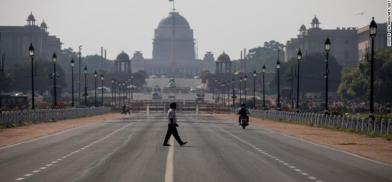India needs to be realistic, should lift lockdown
Prime Minister Narendra Modi declared lockdown all over India around 40 days back, which caught the countrymen by surprise and led to a feeling of uncertainty

Prime Minister Narendra Modi declared lockdown all over India around 40 days back, which caught the countrymen by surprise and led to a feeling of uncertainty. At that time, neither the prime minister nor anyone else in India knew as to what was in store for the country due to the COVID-19 outbreak.
At that time, the news from China and some European countries regarding the spread of the virus was alarming. The prime minister had no alternative other than imposing nationwide lockdown, as a measure of abundant precaution to save India from the virus spread. It was a pleasant surprise that the entire country of 1.3 billion responded to the call without question. While some indifferent persons violated the lockdown proceedings, the number of such persons was minuscule compared to the vast majority.
The central and all state governments cooperated and the lockdown was implemented with a maximum level of efficiency, considering the overall Indian scenario. Actually, it was a partial lockdown, since agricultural operations were allowed and transportation of essential and non-essential goods between states was permitted. Some industries producing goods such as pharmaceuticals, sanitizers, detergents, and inputs required for the manufacture of these goods also operated, though at much-reduced capacity.
Even with such partial lockdown, the intensity of virus spread in India was not high compared to several other countries, considering the population density of India.
Though people were put to enormous hardships, particularly those belonging to lower-income group, unorganized sector, and deeply deprived people like visually impaired, hearing/speech impaired, mentally disturbed people, destitute women, aged people in poor health, etc., during the lockdown period of 40 days, there was no big social unrest due to such sufferings. The government was able to buy peace with them by offering freebies such as free rice, cash transfers, etc.
Obviously, it is no more possible to continue with such a grim situation of joblessness and slowing down of economy anymore. Therefore, lifting the lockdown has become a matter of necessity and priority all over India.
Of the total population, only a little over 45,000 people have been infected by COVID-19 and more than 20 percent of the people have recovered. Till date, over 1,500 people have died due to COVID-19 and it is possible that some of these people who have died could have been suffering from other serious ailments too and lacking in immunity level.
In the normal time, on average, seven persons die for thousand populations every year in India. This translates to around 90 lakh (9 million) death in a year in normal times on average, around 15 lakh (1.5 million) deaths every two months. In the case of COVID-19 in India, to date a little over 1,500 people have died. This figure is a small fraction of deaths that have been taking place in a normal year in India.
Further, it is gratifying to note that the recovery rate in India is reasonable. It is certain that the recovery rate would further improve. While lockdown has been implemented in India efficiently, one gets a feeling that in the coming days, implementation of lockdown would not be better than what has been achieved in the last 40 days. Continuing the lockdown at the same level would certainly provide diminishing returns.
It is time now to relax the lockdown and gradually improve economic activity and prevent the intensity of the joblessness scenario. While lives and livelihood are both important factors in a welfare society, optimization of both these factors based on ground reality would only be a pragmatic exercise.
India has gained a lot during the 40-day lockdown period, by creating awareness among the people about the COVID-19 crisis and the need for preventive measures to ensure that the virus would not spread further. People are bound to cooperate in the coming days, even if the lockdown would be steadily lifted in the interest of their self-protection and it is unlikely that the situation would become worse than what it is today.
All said and done, lifting lockdown is a cost-benefit decision and the fact that the virus spread and death rate has been kept well under control during the last 40 days of lockdown and the experience gained in implementing the lockdown should give confidence to the governments to take a decision on gradually lifting the lockdown.
While lockdown decision around 40 days back was a pragmatic decision, lifting lockdown at the present time gradually would be an equally pragmatic decision.
(The writer is a Trustee, NGO Nandini Voice for the Deprived, Chennai. He can be contacted at nsvenkatchennai@gmail.com)









Post a Comment